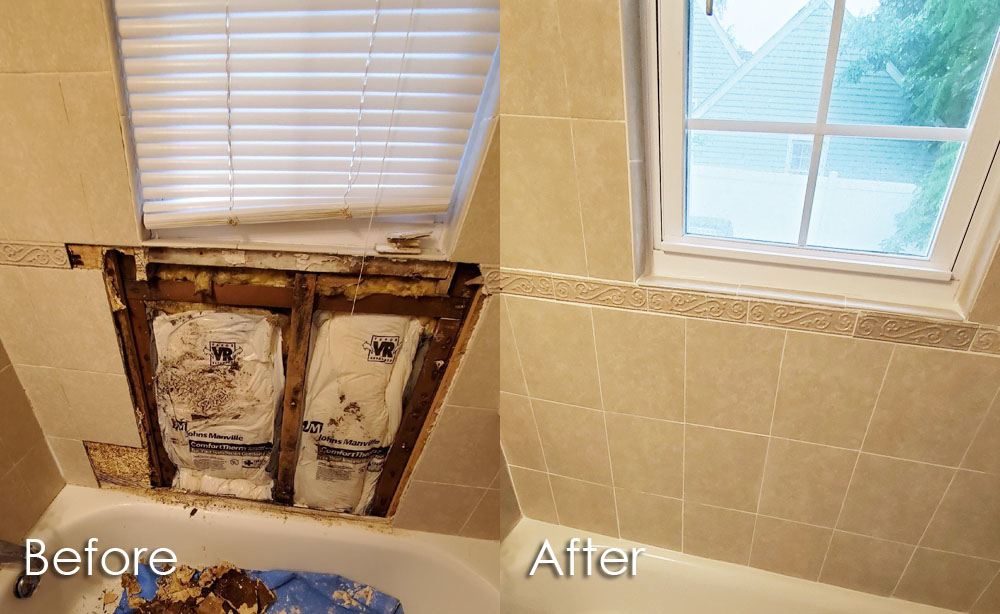What're your ideas concerning Preventing Water Damage in the Bathroom?

The bathroom is very at risk for damp buildup and prospective water damages due to the constant use of water in it. This short article supplies easy examination methods to aid spotting water damages threats.
The frequent use of water in the washroom makes it extremely prone for wet accumulation as well as possible water damage. By evaluating it regularly, you can decrease water associated problems.
The following set of assessments is simple to execute and ought to be done when in every 3 months in order to keep your washroom in good shape and to avoid prospective water problems brought on by the bathtub, the shower, pipe joints as well as plumbing, sinks, cupboards, as well as the commode
Do not forget doing these examinations and be comprehensive while doing them. Bear in mind that these basic examinations can conserve you a lot of money by providing early indicators for water damage
Bathtub and Shower
The shower and bath tub require special interest and maintenance. Inspect the floor tiles and also replace if broken. Ensure that there is no missing grout between the ceramic tiles. Check and also change fractured caulking at joints where the walls meet the floor or the tub. Blocked drains pipes as well as pipes problems will avoid the tub from drying out as well as might show significant troubles under the bath tub. Consult with a professional right away to avoid structural damage. Take note of discolorations or soft areas around the bathtub walls as they may indicate an internal leak.
Plumbing
Signs for water damage are tough to spot because many pipes are installed inside the wall surfaces.
Pay unique focus to floor covering as well as walls wetness and stains as they may suggest an unnoticeable plumbing problem. Check dampness degrees in adjacent spaces as well.
Sinks and Cabinets
Sinks and closets are revealed to wetness as well as moisture day-to-day as well as are typically neglected. Inspect regularly under the sink and also on the counter top above it. Repair any kind of drip in the catch as it may suggest drain problems. Check out the sink, slow-moving draining pipes may show an obstructed drain. Change sink seals if they are split or loose.
The Toilet
The commode is a prone water joint. Examine the water lines as well as search for leakages around the bathroom seat, in the hose, and also under the water storage tank. If you detect any kind of indications of moisture on the flooring around the bathroom, look for leaks in the toilet rim and container seals.
Know that hanging bathroom bowl antiperspirants boosts the possibilities for clogs.
TIPS TO PREVENT WATER DAMAGE IN THE BATHROOM
The average household uses approximately 80-100 gallons of water per person per day. For a family of 4, that's almost 2,500 gallons of water a week! The largest portion of this consumption comes from bathroom use. Flushing the toilet uses the most water, followed by taking a shower or bath. With that much water running through the home, water damage in the bathroom is bound to happen. Knowing how to spot signs of a water leak is essential to preventing long-term damage. This guide provides you with tips to reduce the impact of water damage on your bathroom.
CAUSES OF BATHROOM WATER DAMAGE
Pipe breaks are the most common cause of water damage we see in our daily jobs. The age of a pipe plays a large role in a pipe break as well as corrosion. Over time, the metal begins to break down, allowing water to escape. Frozen pipe breaks are also a concern in the winter months. Toilet overflows caused by paper products or children flushing inappropriate items. Degraded caulking around the toilet or bathtub can allow water seepage, sometimes behind the fixture, into the subfloor or walls. Condensation forms when the water in a pipe is cooler than the air temperature. Beads of water form on the exterior of the pipes, sometimes so much so that the water begins to drip and pool below. Sink or shower backups created by poor drainage. HOW TO PREVENT WATER DAMAGE IN YOUR BATHROOM
Inspect your toilet supply line for worn or frayed hoses and replace them as needed. Winterize your plumbing to prevent a frozen pipe break. Use vent fans to prevent condensation that can lead to mold growth. Routinely check and replace degraded caulking around your toilet or bathtub. Increase the temperature in your toilet tank and insulate your pipes during the warm summer months to keep condensation from forming. Use child safety locks on the toilets. Flush only toilet paper. "Flushable" wet wipes are actually not good for your plumbing system. Additionally, feminine hygiene products should not be flushed. Prevent water from escaping the tub or shower. Make sure shower curtains are in good condition. Inspect shower doors and replace the seal strip if necessary. Wipe up any water that accumulates on the floor and use bath mats. Water left to sit can cause damage to the tiles and flooring. Refrain from using bath products containing heavy oils to avoid a clogged drain.

As a devoted reader on Looking for Signs of Water Damage in the Bathroom, I figured sharing that piece of content was smart. Sharing is nice. Helping people is fun. Thanks a lot for your time spent reading it.
About